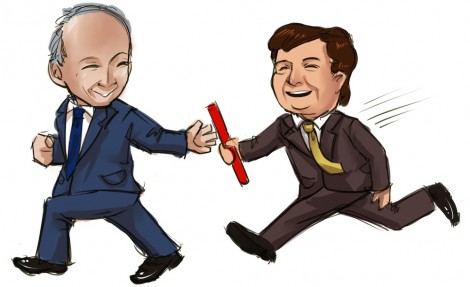David Naylor stepped down as U of T president on Friday, ending eight years in the university’s most important office. For almost a decade, Naylor has filled the president’s office with remarkable energy and has often been in the public eye. It is hard to assess Naylor’s personal legacy, but the university has certainly benefitted from his efforts.

NANCY JI/THE VARSITY
At the time of his appointment, Naylor’s successor, Meric Gertler, emphasized Naylor’s achievements in raising U of T’s international reputation: “I am following in the footsteps of President Naylor — a leader who has combined vision, hard work, and dedication to propel the University to compete with the best institutions in the world.” Under Naylor, U of T has placed among the world’s top 20 universities in both the QS World University Rankings and the Times Higher Education World University Rankings. Although Naylor himself has questioned the accuracy and significance of university rankings, they are just one indication of U of T’s growing international standing. Naylor can claim a great deal of credit for this achievement. The “Boundless” fundraising campaign, launched in Naylor’s second term, is the largest in Canadian academic history and has bolstered the university’s global connections. Again, Naylor’s personal involvement has been substantial.
Although Naylor has been good for U of T’s public image abroad, he has been less successful closer to home. Perhaps the most prominent example of this is the proposed student residence that was to be built by Knightstone Capital Management Inc. on College Street. The university’s negotiations with Toronto City Council and with community groups opposed to the proposals were less than cordial. The university released an unsigned statement accusing city councillor Adam Vaughan of “uncharacteristically threaten[ing] to use his office to damage the University’s interests in various ways,” while Harbord Village Residents’ president Rory (Gus) Sinclair threatened to “[go] to war” with the university. The incendiary back-and-forth over the residence contributed to Toronto City Council’s rejection of the proposal. It would be unfair to lay the blame for this fiasco on Naylor alone, but as president, community and public relations were part of his responsibility.
It seems fortunate, then, that incoming president Gertler’s academic background is in urban geography and economics. Gertler seems well-suited to ameliorate the often-strained relationship between the university and surrounding communities. In an interview with The Globe and Mail, Gertler stated that he sees “a real opportunity for the U of T to play an expanded role in city-building, and working with civic leaders.” If U of T is to continue to expand, particularly if it is to finally build new residences, effective communication and compromise with its neighbours must be a priority. This is one promising area where Gertler has the opportunity to make his mark.
There are also areas where Gertler seems poised to build on Naylor’s successes. Gertler has already helped raise $175 million towards the Boundless campaign. He seems eager to pick up where Naylor left off in the university’s fundraising efforts, saying in one interview that he enjoys fundraising. Private donations have met or exceeded expectations for several years, but this is not the only funding question that the new president will have to manage. As president, Naylor repeatedly stated that government funding is unsustainably low. In addition to expanding and improving community relations, Gertler should focus on continuing to persuade governmental bodies to invest in the university. One of Naylor’s approaches to this issue has been to emphasize entrepreneurship at the university. Gertler may well continue this, but should be cautious to prevent excessive commercialization of research and ideas.
Gertler’s history as dean of the Faculty of Arts & Science means he does not assume the presidency with an entirely clean slate. The controversial 2010 review of the faculty, which proposed major budget cuts that included the termination of the university’s Centre for Comparative Literature, drew outcry from students and faculty alike. Gertler also played a major role in implementing the university’s unpopular flat fee policy, which has been a major student grievance since it was introduced. Some tension between the university’s students and its president seems inevitable. Yet these high-profile and unpopular decisions mean Gertler could have an uphill battle to convince skeptical students of his good intentions. This should not, however, preclude constructive dialogue between the new president and student leaders.
The impact of the president on the university is difficult to measure. Like any leader, the tone a president strikes and the example they offer can be as important as specific policies and initiatives. Gertler should model transparency and willingness to consult and compromise in the many challenging situations he will undoubtedly face. The university has, on the whole, been well-served by Naylor, but there is always more work to be done.


